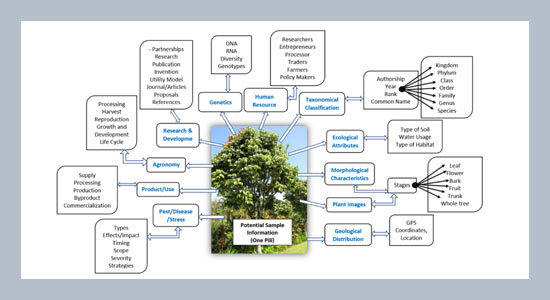John Rey Lirag1,2*, Ronnel Atole1,2, Leo Constantine Bello1,2, Rowell John Artiaga2, Salvador Briones II1,2 1 Information and Communication Technology Management Office, Partido State University, Camarines Sur, Philippines
2 College of Arts and Sciences – Institute of Information Technology, Partido State University, Camarines Sur, Philippines
Download Citation:
|
Download PDF
The organization and presentation of agricultural data are greatly facilitated by databases that are specially designed to allow ease of data entry and organized data display. The Pili knowledge bank together with its user-friendly interface was designed and implemented to showcase the knowledge collected from different Pili cultivars, enabling users around the world to see its prospects and potentials. This study, in general, supports and responds to the challenges entailed in the national government’s having identified “Pili” (Canarium ovatum Engl.) as the “flagship commodity” of the bicol region, Philippines due to its competitive advantage for export and other potentials. This crop is also considered a “tree of hope” because of its usefulness from sap to roots. In particular, it seeks to address the dearth of accessible knowledge on the Pili industry through the creation of “Pili Knowledge Bank”, a comprehensive digital repository, based on a relational database that stores information efficiently and in a standardized manner. The database also allows efficient queries, utilizing the social Web (Web 2.0) technologies, and is designed and structured towards knowledge management (KM) build-up. The authors observed that this intervention can be leveraged to design and implement the next generation of data, models, and decision support tools for the agricultural production system to benefit the agricultural community especially the marginalized farmers and vendors, and the country as a whole.ABSTRACT
Keywords:
Canarium ovatum Engl., Relational database, Web 2.0, Knowledge management.
Share this article with your colleagues
REFERENCES
ARTICLE INFORMATION
Received:
2021-02-05
Revised:
2021-04-30
Accepted:
2021-05-11
Available Online:
2021-06-21
Lirag, J.R., Atole, R., Bello, L.C., Artiaga, R.J., Briones II, S. 2021. The Pili knowledge bank: A comprehensive digital repository backend for Pili (Canarium Ovatum Engl.) information system. International Journal of Applied Science and Engineering, 18, 2021045. https://doi.org/10.6703/IJASE.202106_18(4).007
Cite this article:
Copyright The Author(s). This is an open access article distributed under the terms of the Creative Commons Attribution License (CC BY 4.0), which permits unrestricted use, distribution, and reproduction in any medium, provided the original author and source are cited.






